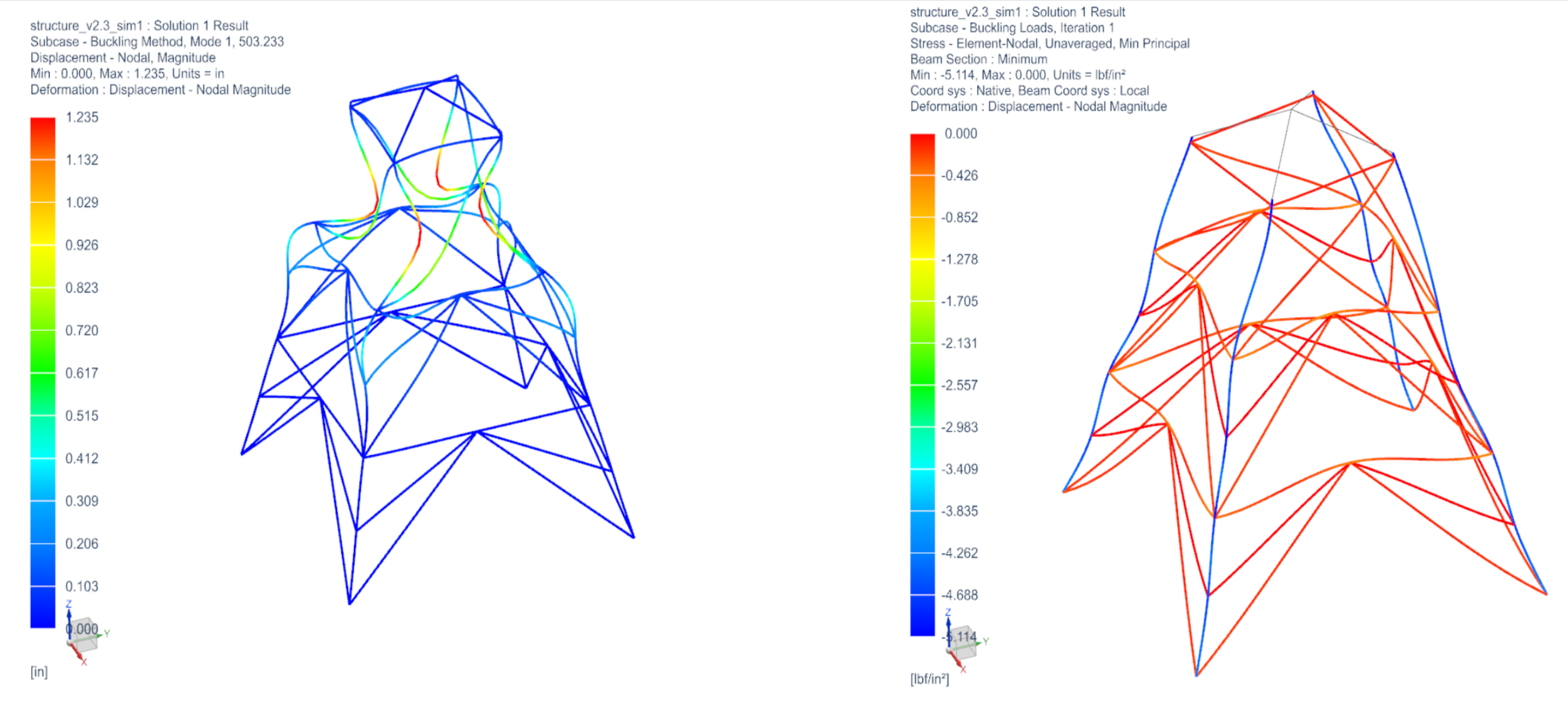Efficient Structure Design

The first semester of senior design at the University of Rochester culminates in a competition where students team up in small groups and design balsa structures. The goal is to build the structure with the highest strength to weight ratio. The rules are simples: the design must meet fit in the prescribed space envelope, the structure can only be built from the supplied glue and balsa of varying cross-section, and the structure must be support a load between 10-250 lbf before breaking. We first modeled our designs in Siemens NX and then ran NASTRAN simulations to analyze the principal stresses, buckling modes and mass properties. Using this data, we iterated on our design by changing cross sections and geometric parameters to optimize the strength to weight.

At the end of the semester, the final designs were construction from balsa and tested. The structure was loaded with the weight of the team as the members walked along a board approaching the structure while an inline load cell measured the applied load. Our team placed first out of the 25 teams in the class and our structure failed with a load just over 217 lbf and a final strength to weight ratio of roughly 2800. We credited our success to careful final construction and designing the structure with an extremely high critical buckling load to account for the high vulnerability to geometric variability in the assembled model. We ended up designing our critical buckling load to nearly 3x the ultimate stress load which is why our structure was one of the only ones that did not fail in buckling. I personally worked on optimizing the design, building and running the NASTRAN simulations and final construction of the structure.

A link to a University of Rochester news article about the competition and the senior design class can be found here.
